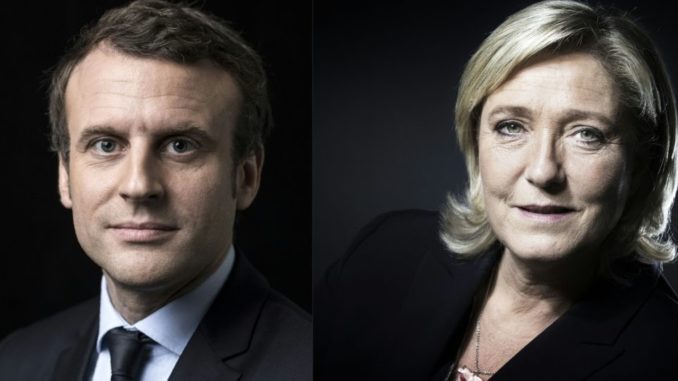
In French presidential elections one candidate after the other is eliminated until at the end only one is left standing. Voting is in two rounds of what is, theoretically, in the eyes of Charles de Gaulle who initiated the system of direct voting for the election of the president, “a rendezvous between an individual and the Nation.” De Gaulle disliked and did not trust political parties, seeing political manipulations and the disputes among parties as a principle source of weakness which had led to the defeat of France in 1940.
De Gaulle created what he thought of as “a movement,” a coming together of people from different ideological positions as had been the resistance movement he embodied during the 1940-1944 occupation of France. Thus, after he returned to power in 1958, he worked to create a political system largely shaped by his idea of himself: a president above the ideological divisions of political parties who would be the symbol of France for the rest of the world and for the French people themselves.
There was something of the myth of the King in de Gaulle’s thinking. In his youth de Gaulle had been influenced by the neo-royalist thinking of Charles Mauras. Although Mauras supported the government of Vichy during the 1940-1944 period and de Gaulle never referred to Mauras as an ideological source, there were strong elements of Mauras’ vision of a national leader above the political infighting of parties, a leader who had a nearly mystical sense of the common good of the Nation.
De Gaulle fitted somewhat his image of himself as the leader of the Free French during the Second World War and as the only person who could end the 1954-1962 war in Algeria. But such leadership is rare and not really suited to normal times and circumstances. While the men who have followed de Gaulle as president have not been lacking in ego, and held a somewhat disproportionate view of the value of their leadership, they have been rather normal leaders of a political party able to reach out somewhat more broadly in order to receive a majority vote.
The 2017 presidential campaign is closer to what de Gaulle envisaged, though the “king” image is probably lacking. The campaign style arises from the disintegrating structure of the political parties. The French Communist Party, once organized on Leninist lines of party discipline, has largely disappeared from the national political scene, though some party discipline still exists at the local level. What was the Communist Party electorate was largely incorporated into a broad Left movement of Jean-Luc Melenchon, a long-time Socialist Party member who has tried to create a broad Left current, “La France Insoumise” (Unsubmissive France). He received some 19% of the votes, just under the two front-runners who will be in the run-off, Emmanuel Macron and Marine Le Pen. Also on the Left were the representatives of two Trotsky currents, Philippe Poutou who received 1% of the votes and Nathalie Arthaud who received 0.6%. The difference between the two factions must be esoteric as it does not appear in reading the programs of the two candidates.
What had once been the Socialist Party officially backed Benoit Hamon, a short-lived Minister of Education in the current government who received some 6% of the votes. The Socialist Party had lost most of its organizational structure through infighting and general disappointment with the leadership (or its lack) of the Socialist Party-led government over the last five years.
Likewise what had been the political party structured by de Gaulle, even if he refused to think of it as a party, has changed its name under each of its subsequent leaders. It is currently called the Republicans, a name taken for its supposed devotion to France as a Republic, but it is more in line with the US Republicans. The Republicans have little organizational structure or party discipline. Francois Fillon, its candidate who had once served as Prime Minister under Nicolas Sarkozy but who left little image of his tenure, was undermined by news stories that his wife and children had been paid with state funds as “parliamentary assistants” with little trace of having done any legislative work. Fillon’s wife was defended as having sorted his mail at home but with a salary that many French unemployed would have gladly received. Fillon had also accepted very expensive suits from a leading tailor – nothing illegal – but which did little to create a bond with more modest members of the working class.
Many in the working class who usually voted for the Left candidates voted for rightwing Marine Le Pen, leader of the National Front and daughter of Jean-Marie Le Pen, the founder of the movement. She has been able to get rid of some of the Far Right image of the movement as made up of persons nostalgic for the Vichy Government of 1940-1944 and French colonialism. The image has been modernized and has attracted a good number of young people by its anti-establishment speeches. However, the ideas have stayed the same.
The run-off will be between Emmanuel Macron, a 39 year-old Left-center economist who was for two years the Minister of the Economy in the current government, and Marine Le Pen, a Right-nationalist. The positions of the two are in clear opposition, especially as concerns European integration. This will be an interesting period leading to the second round of voting on May 7th.
Rene Wadlow is President of the Association of World Citizens.
